Interrail: 50 years of unlimited European rail travel
Tips & tricks for unlimited travel through 33 countries
Experience the freedom of exploring 33 European countries with just one ticket on your phone. From the picturesque canals of Amsterdam to the bustling streets of Istanbul, or the historic landmarks of Berlin to the sunny coast of Lisbon, Interrail lets you travel as much as you want, wherever you want. Having celebrated its 50th anniversary in 2022, Interrail still today opens up a world of possibilities. Find insider tips and answers to common questions to make the most of your journey.
Over the years, we’ve crisscrossed Europe countless times using an Interrail Pass, whether for a quick five-day getaway or a whole fortnight—from Amsterdam to Bologna, Bucharest to Munich, Lisbon to Athens. Even for a return trip to destinations like southern Italy or Spain, opting for a 4- or 5-day Interrail Pass often proves to be the most affordable choice compared to standard tickets.
Interrail: an overview
Interrail in figures
6 reasons to Interrail
Where can I travel with Interrail?
What passes are available?
How much does an Interrail pass cost?
What’s cheaper: Interrail or single tickets?
When should I book?
How can I plan my journey?
Popular routes
Our personal tips & tricks


Interrail: an overview
Interrail, a pass that has facilitated unlimited rail travel across Europe since 1972, is akin to holding a train ticket for an entire continent. Wherever you’re journeying to and from, it’s all possible with just one ticket on your mobile phone. It sounds too good to be true, but it is.
Introduced back in March 1972, the first Interrail Passes sparked a travel revolution. ‘Interrailing’ swiftly became synonymous with a unique travel experience and the freedom to explore Europe by train.
Anyone resident in Europe can purchase an Interrail Pass, regardless of age. Travellers under 27 or over 60 enjoy discounted rates, and children up to 11 years old travel for free, making it often considerably cheaper than air travel.
The ‘Interrail Global Pass’ isn’t limited to trains—it’s also valid on some ferry and bus connections, and offers discounts on various activities, accommodations, and attractions. The pass can be used for as few as four travel days of your choice in a month or up to three consecutive months across 33 participating countries.
Eurail, the company behind the Interrail Pass, also offers One Country Passes. These passes cater to those who prefer to explore a single country rather than crossing multiple borders, providing flexibility for more tailored travel experiences
Interrail in figures
Interrail was launched in 1972 by European Railways, aimed at offering affordable European travel options to people up to 21 years old. Initially spanning 21 countries, the pass cost approximately the equivalent of €50 for a month-long journey. Following the dissolution of the Soviet Union in 1991, Interrail expanded to encompass 29 countries by 1994. Since 1998, the pass has been accessible to travellers of all ages.
Today, more than 600,000 travellers a year travel across Europe with Interrail and its counterpart, Eurail (for non-Europeans). The network covers over 250,000 kilometres of railways and more than 40,000 destinations in 33 different countries. By 2023, Interrail had sold over 1 million passes.
The entity overseeing the Interrail pass is Eurail, an alliance comprising over 35 European railway and ferry companies, along with more than 100 tourism partners offering discounts to Interrail Pass holders.
In 2019, the most popular cities among Interrailers were Vienna, Hamburg, Berlin, Prague, and Budapest. Meanwhile, the top five visited countries included Italy, Germany, Switzerland, France, and the Benelux region.
The same year, the top five most popular rail routes were:
- Hamburg to Copenhagen
- Berlin to Prague
- Budapest to Vienna
- Prague to Vienna
- Amsterdam to Berlin
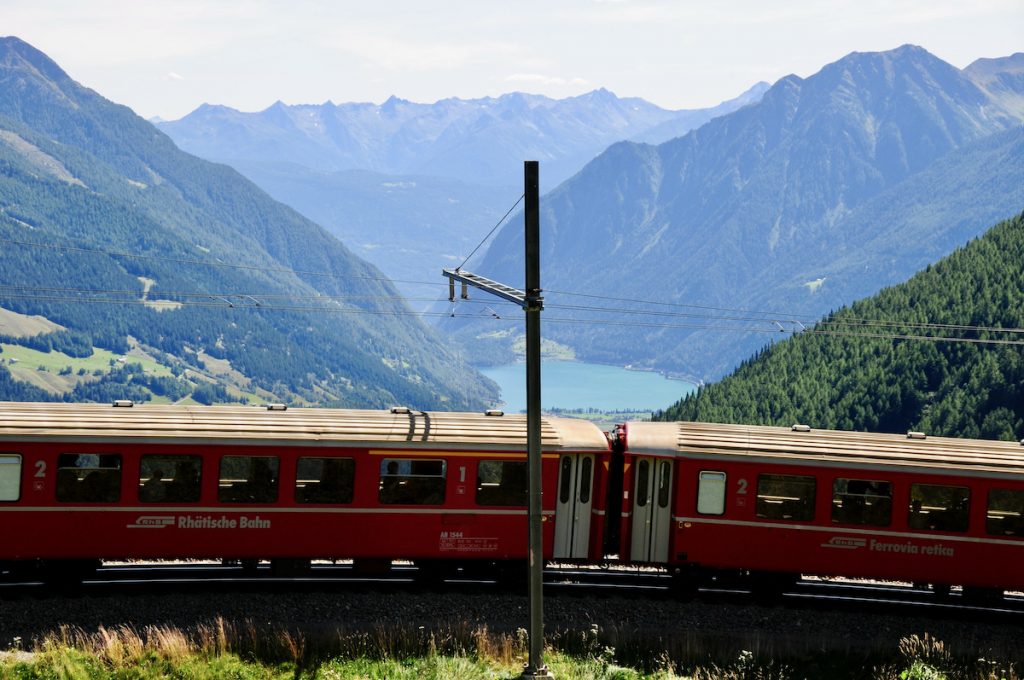
6 reasons to Interrail
- It’s eco-friendly: Many people are keen to reduce their carbon footprint, and opting for the train instead of a flight for your next holiday is one of the best ways to do so.
- It’s hassle-free: Say goodbye to security checks and long waits in dreary airports. Instead, sit back with a good book and enjoy some scenic views along the way.
- It’s cost-effective: Whether you’re planning to explore multiple countries or cover long distances across Europe, an Interrail Pass is definitely the cheapest and easiest choice. What’s more, children up to 11 years of age travel for free.
- It’s convenient: Arriving by train right in the heart of a European city eliminates the hassle and cost of airport transfers.
- It’s exciting: Taking the train means taking in stunning scenery and immersing yourself in local culture. You might even find yourself sharing a beer in the train bistro with fellow travellers you’ve just met.
- It’s the best of both worlds: Enjoy the sense of nostalgia and adventure that comes with train travel, all while enjoying the efficiency and comfort of today’s high-speed trains.
Where can I travel with Interrail?
With your Interrail pass, you have access to train travel in 33 European countries. These include Austria, Belgium, Bosnia & Herzegovina, Bulgaria, Croatia, Czech Republic, Denmark, Estonia, Finland, France, North Macedonia, Germany, Great Britain, Greece, Hungary, Ireland, Italy, Latvia, Lithuania, Luxembourg, Montenegro, the Netherlands, Norway, Poland, Portugal, Romania, Serbia, Slovakia, Slovenia, Spain, Sweden, Switzerland, and Turkey.
Unfortunately, the Interrail pass does not currently cover train travel in Albania, Kosovo, Russia, Ukraine, or Belarus.
Please note: if you live in one of the countries covered by the Interrail pass, you cannot use the pass for unlimited travel within your own country. However, you are entitled to one outbound journey from your place of residence to the border, and one inbound journey from the border back to your place of residence. These are known as the outbound and inbound journeys, respectively. These journeys are recorded in your pass and can only be used once each.
You can download the Interrail map of Europe here (PDF).
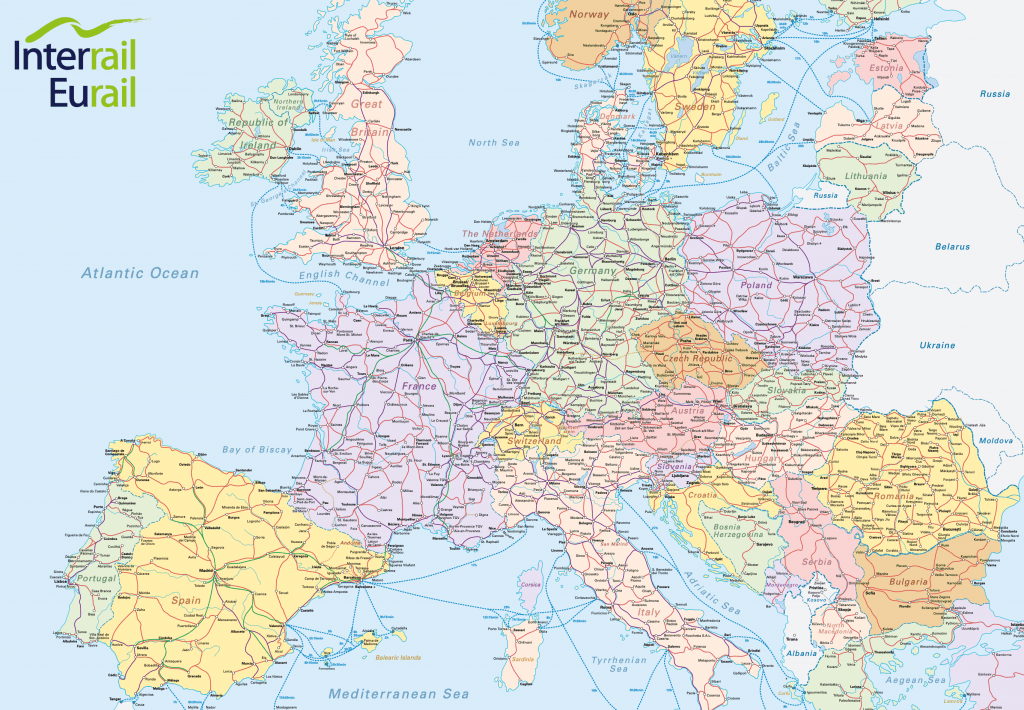
What passes are available?
Interrail offers two main types of passes: the Interrail One Country Pass, valid for travel within a single country of your choice, and the Interrail Global Pass, which covers the entirety of Europe (33 countries). In this article, we’ll explore the Global Passes. For more information about One Country passes, please refer to the Interrail website.
When choosing your pass, you can choose between a ‘continuous ticket‘ or a flexible option. The continuous ticket allows for uninterrupted travel for 15 or 22 days, or for 1, 2, or 3 months. Alternatively, the flexible option lets you choose travel days within a 1 or 2-month period.
You’ll also need to choose between First or Second class. Second class is cheaper and suitable for most travellers, while First class offers quieter surroundings, more space, and often includes additional amenities such as free drinks and onboard service. The price difference may be worth it if you’re a frequent traveller.
The flexible pass is particularly popular, allowing travelers to purchase a set number of travel days within a specific period. Options include 4, 5, or 7 travel days within one month, or 10 or 15 travel days within two months, providing flexibility for rest days or for making multiple trips.
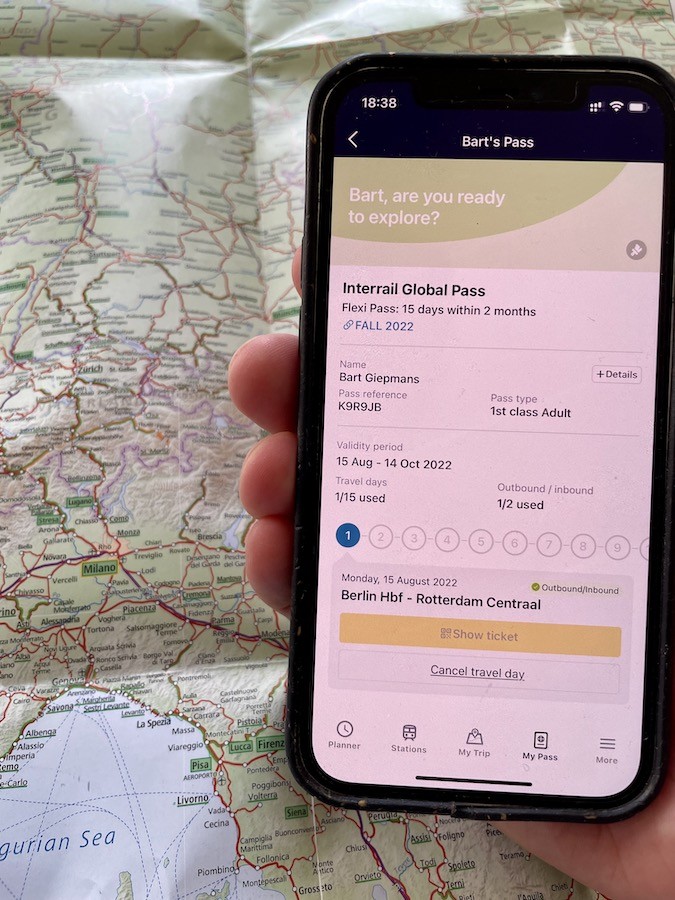
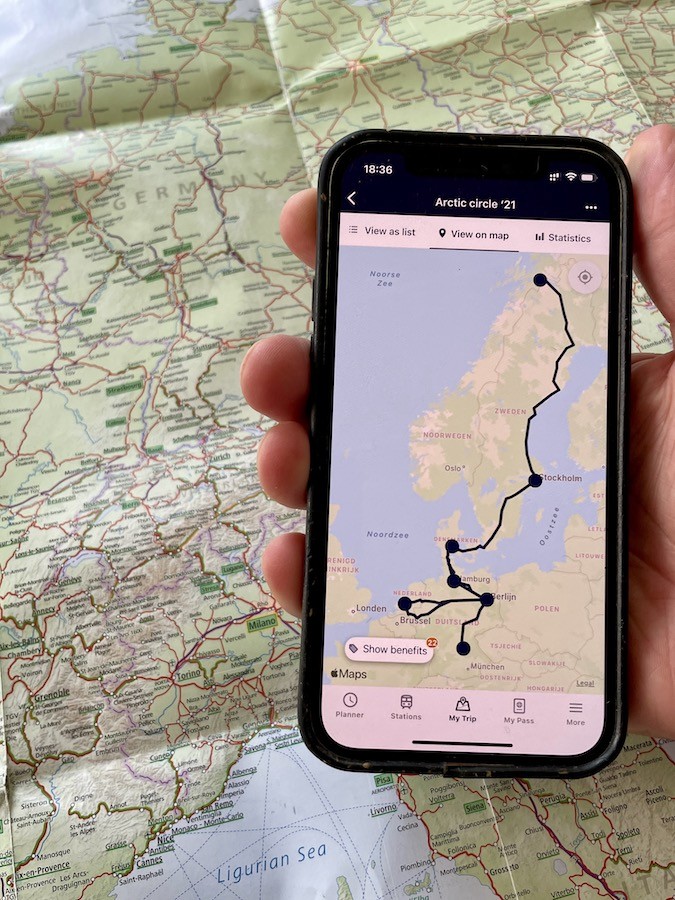

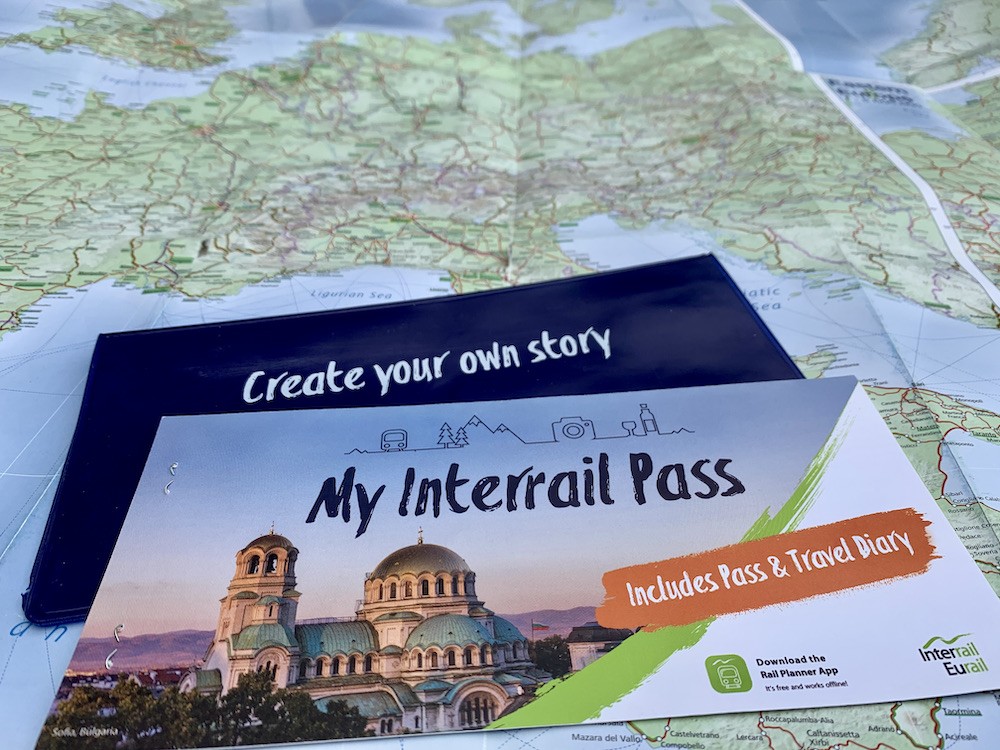
Before planning your itinerary, it’s wise to consider how long you’ll be traveling and how many days you’ll spend on the train.
The choice between passes depends entirely on your itinerary and the time you have available. If you prefer not to travel by train every day and plan to make several stops, the flexible option is ideal. Flexible passes offer more opportunities for extended stays in particular places, without feeling pressured to use up travel days. The downside is that you need to have a rough idea in advance of how many days you’ll be traveling. However, since rest days between train journeys are often essential, this pass is suitable for most travellers. The ‘continuous pass’ is more suitable for travelers who want to cover a lot of ground without hanging around in one place for long, or for those who enjoy frequent train trips within a specific area.
You can find a trip planner tool on the Interrail website to help you determine the ideal pass for your journey.
You can book all Interrail Passes directly on the Interrail website.

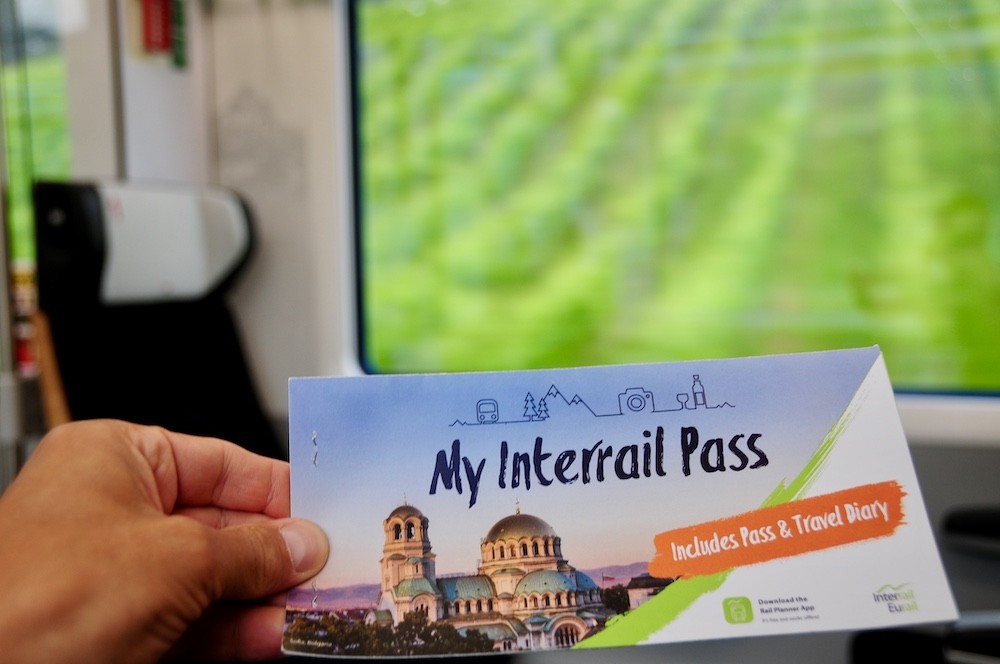
How much does an Interrail pass cost?
The prices of the Interrail Global Passes are listed in the tables below. It’s worth noting that there are regular promotions on the Interrail website, offering discounts of 10% or sometimes even 15% on all passes. To stay informed about these promotions, be sure to subscribe to our newsletter. Plus, don’t forget that children up to 11 years old travel for free.
| Interrail Global Pass 2nd class | < 27 years of age | 27 – 59 years of age | from 60 years of age |
|---|---|---|---|
| 4 travel days of your choice within a month | 194 | 258 | 232 |
| 5 travel days within a month | 223 | 296 | 267 |
| 7 travel days of your choice within a month | 264 | 352 | 317 |
| 10 travel days of your choice within two months | 316 | 421 | 379 |
| 15 travel days of your choice within two months | 389 | 518 | 466 |
| 15 consecutive days | 349 | 465 | 419 |
| 22 consecutive days | 408 | 544 | 489 |
| 1 consecutive month | 528 | 704 | 633 |
| 2 consecutive months | 575 | 768 | 691 |
| 3 consecutive months | 711 | 947 | 853 |
| Interrail Global Pass 1st class | < 27 years of age | 27 – 59 years of age | from 60 years of age |
|---|---|---|---|
| 4 travel days of your choice within a month | 246 | 328 | 295 |
| 5 travel days within a month | 282 | 376 | 338 |
| 7 travel days of your choice within a month | 335 | 446 | 401 |
| 10 travel days of your choice within two months | 401 | 534 | 481 |
| 15 travel days of your choice within two months | 493 | 657 | 591 |
| 15 consecutive days | 443 | 590 | 531 |
| 22 consecutive days | 518 | 690 | 621 |
| 1 consecutive month | 670 | 893 | 804 |
| 2 consecutive months | 731 | 975 | 878 |
| 3 consecutive months | 902 | 1202 | 1082 |
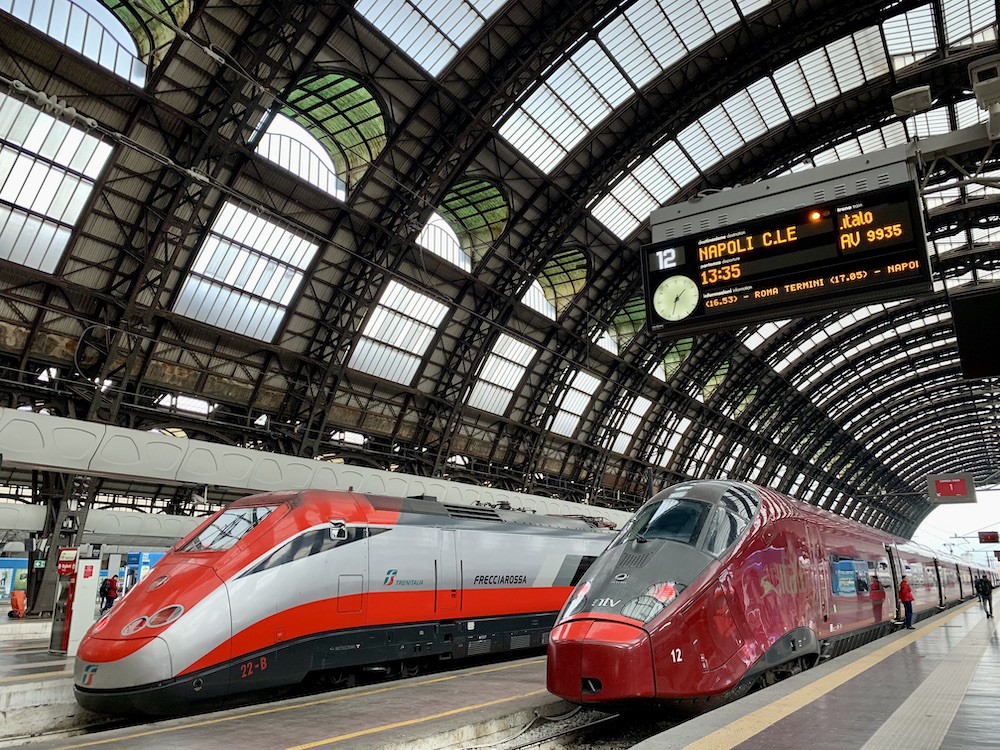
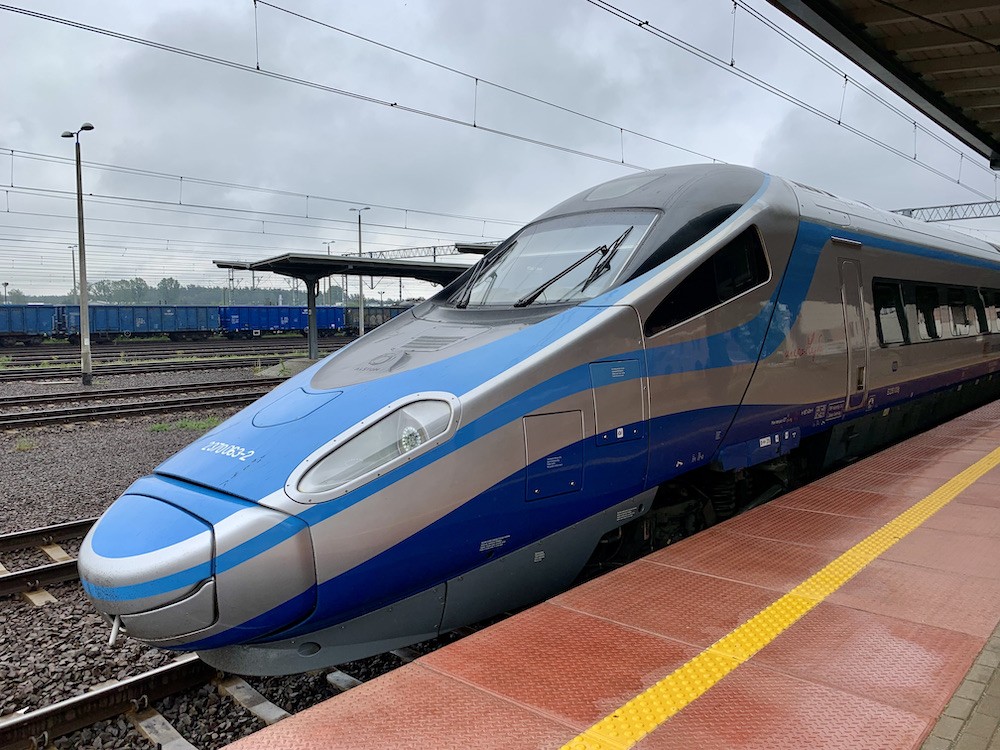
What’s cheaper: Interrail or single tickets?
Many people wonder if it’s cheaper to buy an Interrail pass or single tickets for certain trips. While there are good deals for single tickets, like Amsterdam to Paris for €35 or Amsterdam to Berlin for €38, if you’re doing a few long trips, like from Northern Europe to Italy or southern Spain and back, an Interrail Pass usually saves you money.
Plus, train tickets in countries like Great Britain, Switzerland, Norway, Austria, and Germany can be expensive, especially if purchased last-minute. Even in France, where you might find great deals for long distances with early booking, regional connections often come with full-price tickets.
For those primarily traveling in Eastern Europe, purchasing single tickets may be the cheaper option. Tickets there tend to be relatively inexpensive, especially when booked well in advance. Even tickets bought on the day of departure remain affordable.
Do you know exactly where and when you want to travel? Then single tickets can be cheaper. This is certainly true in Eastern Europe, but also in countries like France and Germany. With early planning (this can usually be done from 6 months in advance in Germany and 4 months in advance in France), you can score good deals. But of course in these cases: you fix your destination and travel date and often cannot change them without cost.
If you have a clear idea of where and when you want to travel, single tickets may be the more cost-effective option. This is particularly true in Eastern Europe, as well as countries like France and Germany. With early planning, you can secure good deals, although it’s essential to remember that in doing so, you’re committing to fixed destinations and travel dates, often without the flexibility to change them without incurring extra costs.
When should I book?
While the Interrail Global Pass offers flexible and unlimited travel across Europe, some trains require additional reservations, but this varies from country to country. Most national trains don’t require them, but in France and Spain almost every long-distance train does. In Italy, reservations are also required for high-speed trains, but slower (regional) trains can be used without a reservation.
In countries like the Netherlands, Belgium, Germany, Switzerland, Austria, Great Britain, Denmark, Norway, and Sweden, you can board most trains without a reservation, with a few exceptions like tourist trains such as the Bernina and Glacier Express.
For most trains, you can make seat reservations yourself on interrail.eu after purchasing an Interrail Pass. It’s essential to do this in advance, especially for trains where only a limited number of seats are available, particularly in France. In Spain, online reservations aren’t available yet, so you’ll need to visit a local ticket office. However, the advantage is that there’s usually an unlimited number of seats for Interrail Pass holders, making it easier to find a spot.
Here’s where you’ll need to make reservations:
- Bulgaria, France, Greece, Spain, Croatia, Poland, Romania, and the Czech Republic: Required for all long-distance trains.
- Italy, Portugal, Sweden, and Slovenia: Required for high-speed trains.
- Hungary and Slovakia: Required for all Eurocity and Intercity trains.
- Bosnia-Herzegovina: Required for all trains.
- Switzerland: Required only on tourist trains like Bernina-Express, Glacier-Express, Golden-Pass-Express, and Gotthard-Panorama-Express.
- Germany and Poland: Required on the Berlin-Warszawa Express.
- Eurostar, TGV, and Thalys: Required between the Netherlands, Belgium, Germany, France, and Great Britain.
- Seats, berths, or beds: Required on almost all night trains.
Tip: Make reservations for long routes and during busy periods like morning or evening rush hours, Fridays, Saturdays, Sundays, and holidays. For full details per country, visit interrail.eu.
You can travel without reservations in the following countries: Belgium, Luxembourg, Germany, Denmark, Norway, Great Britain, Ireland, Montenegro, and Turkey.
Reservation prices vary, ranging from a few euros to as much as €37 for routes like the TGV from Paris to Barcelona. Popular routes may have limited seats available for Interrailers, so it’s advisable to book early.
If you have the time, you can travel quite far even without reservations. For example, you can start your journey from the Netherlands without a reservation because in countries like Germany, Switzerland, and Austria, high-speed trains don’t require reservations. You can conveniently plan your routes using the Rail Planner app, which helps you avoid trains that require compulsory reservations.
How can I plan my journey?
In Eurail’s Rail Planner app, you’ll find most train connections across the entire continent of Europe. The app works offline, enabling you to plan your trip even without a reliable internet connection. It also highlights trains that require reservations, allowing you to request routes that avoid trains with mandatory reservations.
One minor drawback of the Rail Planner app is that it may not always provide the most current times since it operates offline and isn’t updated daily.
Popular routes
With more than 40,000 destinations, there are countless possibilities. Check out Backpacker Dude Julian’s post on Interrail routes for backpackers for some beginners tips.
Here is a selection of some of our Interrail trips:
– Railtripping to the Arctic Circle
– By train through the Scottish Highlands
– Bars, breweries and beer baths
Here are some tips and tricks:
- Plan your route roughly. Having a general idea of where you want to go helps you book trains in advance and avoid surprises.
- Book popular routes early. Night trains, TGVs in France, and some trains in Scandinavia can fill up quickly. In France, there are limited seats available for Interrail Pass holders, so making reservations in advance can prevent stress. You can often cancel reservations for free if your plans change.
- Travel light: A backpack or small suitcase makes travelling easier!
- Consider taking a night train. You’ll save on accommodation costs and experience a beautiful sunset and sunrise from the train. Plus, with a flexible Interrail Pass, you only use one travel day.
- Choose a base. Instead of constantly packing and unpacking, consider staying in one city and taking day trips to nearby destinations. For example, stay in Berlin and explore Leipzig, Dresden, or Warnemünde on the Baltic Sea.
- Arrive on time. Arriving early at stations, especially large ones, ensures you don’t miss your train, as departure tracks can change. Use the extra time to grab a coffee and admire the architecture of the station.
- Bring provisions. While dining cars offer a relaxing dining experience with scenic views, they may not always be available or open. It’s a goo idea to have snacks and drinks with you for unexpected delays.
- Plan for travel to the border. Your Interrail Pass is valid for international trips, with one inbound and one outbound journey included to get you to and from your home.


Leave a Comment